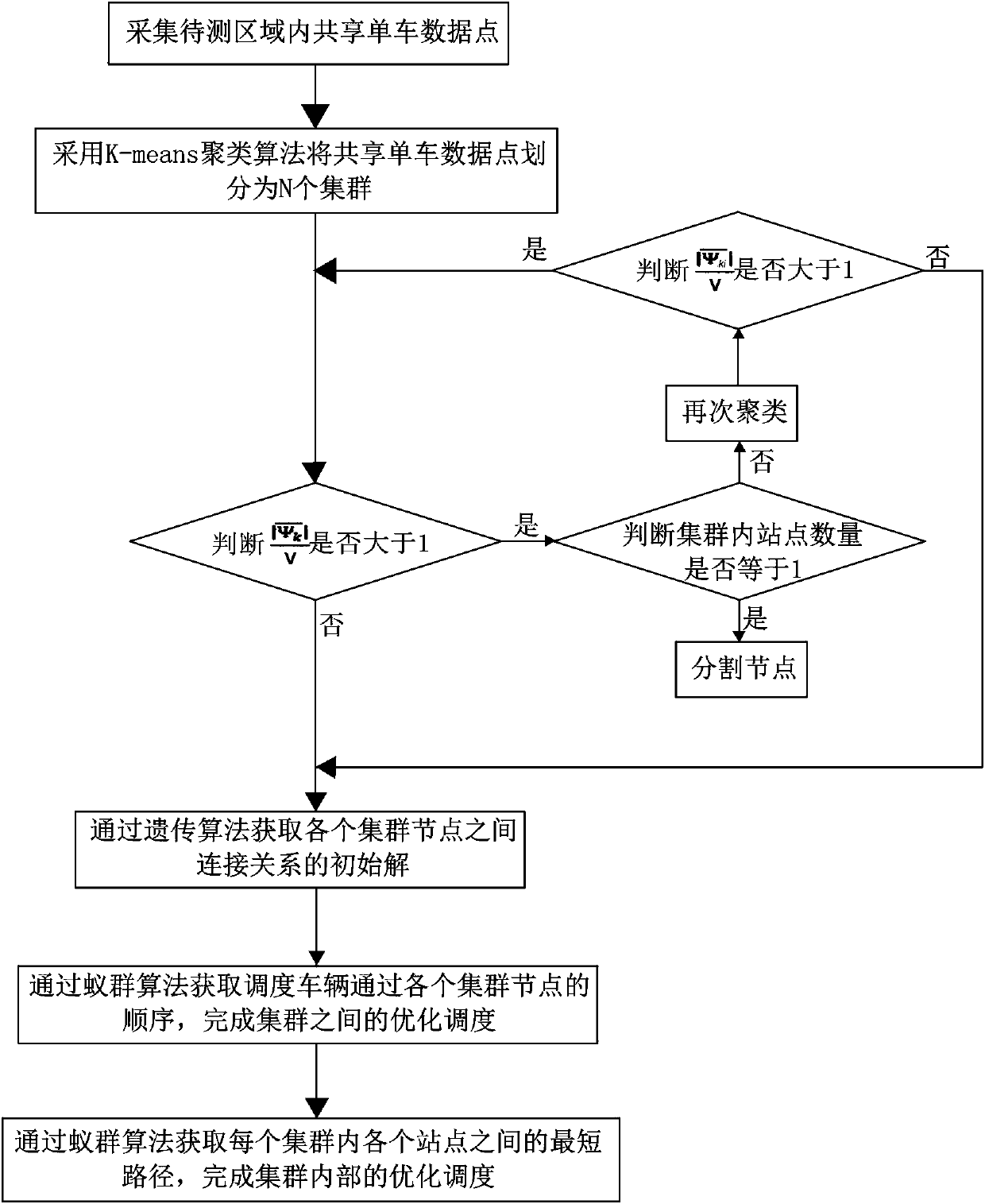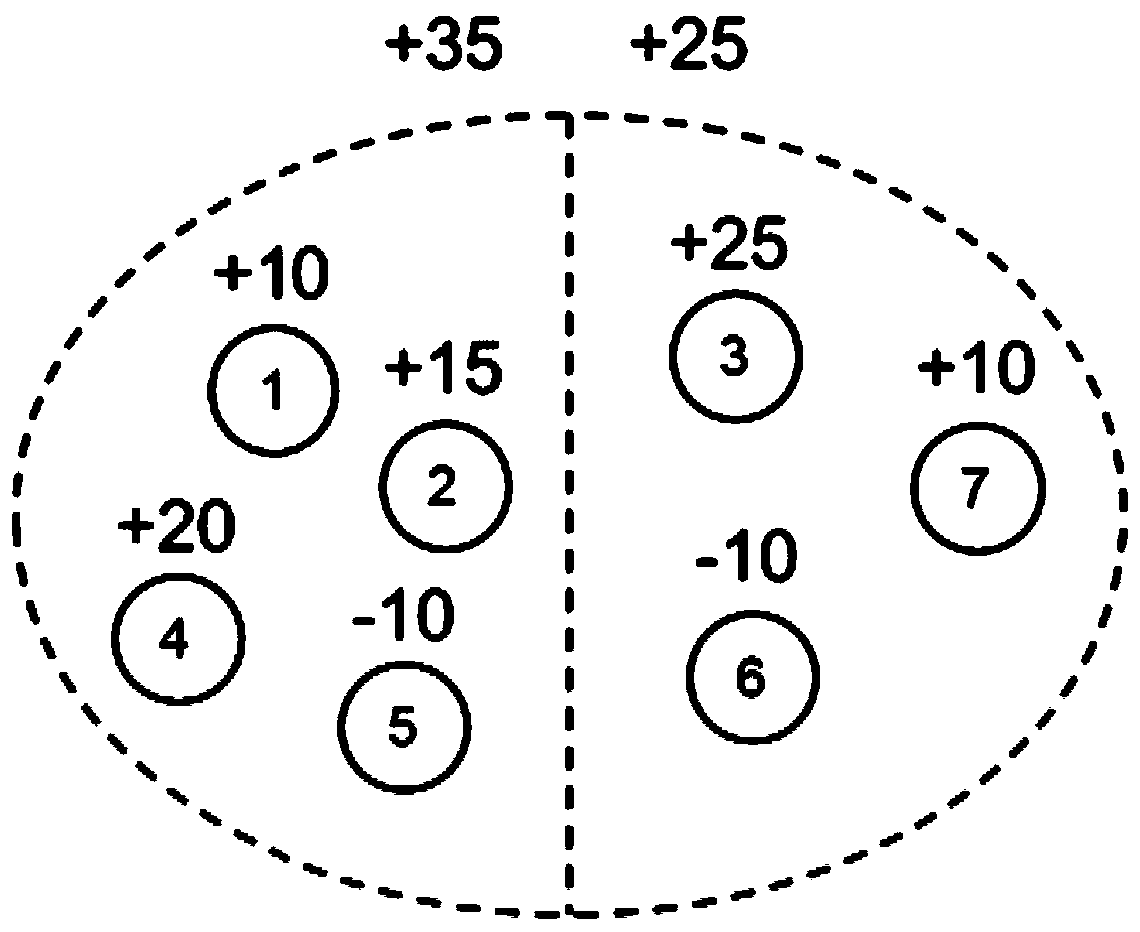Shared bicycle optimal scheduling method based on genetic ant colony fusion algorithm
A technology for sharing bicycles and optimizing scheduling, which is applied in the field of urban shared transportation and can solve problems such as unbalanced distribution of shared bicycles
- Summary
- Abstract
- Description
- Claims
- Application Information
AI Technical Summary
Problems solved by technology
Method used
Image
Examples
Embodiment Construction
[0058] Such as figure 1 Shown, the present invention comprises the following steps:
[0059] A. Collect shared bicycle data points in the area to be tested;
[0060] B. Use the K-means clustering algorithm to divide the shared bicycle data points into N clusters, each cluster includes M sites, and define the distance cluster T k The nearest station to the center is the cluster node Θ k , 1≤k≤M;
[0061] C. According to the number of bicycles in each cluster, perform cluster repair on each cluster; cluster T k The repair process is as follows:
[0062] c1: Get the number of bicycles required in each cluster is a positive number, it means that the number of supplementary bicycles in the cluster is is a negative number, it means that the number of bicycles that the cluster node needs to transport is
[0063] c2: Judgment Whether the calculation result is greater than 1, if greater than 1, then enter step c3, otherwise directly enter step D; V represents the dispa...
PUM
 Login to View More
Login to View More Abstract
Description
Claims
Application Information
 Login to View More
Login to View More - R&D
- Intellectual Property
- Life Sciences
- Materials
- Tech Scout
- Unparalleled Data Quality
- Higher Quality Content
- 60% Fewer Hallucinations
Browse by: Latest US Patents, China's latest patents, Technical Efficacy Thesaurus, Application Domain, Technology Topic, Popular Technical Reports.
© 2025 PatSnap. All rights reserved.Legal|Privacy policy|Modern Slavery Act Transparency Statement|Sitemap|About US| Contact US: help@patsnap.com



